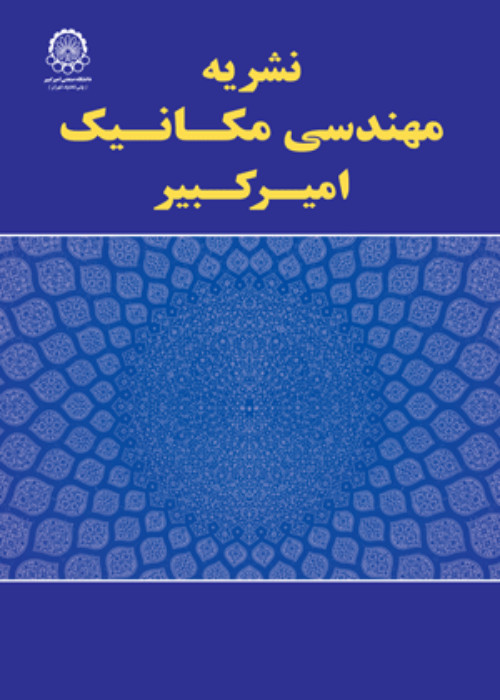Numerical Study of Turbulence in Diesel Spray Combustion Using Large Eddy Simulation
Author(s):
Article Type:
Research/Original Article (دارای رتبه معتبر)
Abstract:
Under modern direct injection diesel engine conditions, the spray and combustion processes are known to be controlled by mixing. In large eddy simulation method, large eddies are solved directly and small scales are modeled, so it can potentially improve the predictive capability by better capturing the large-scale mixing of ambient air with the fuel vapor. In this paper, turbulent spray combustion is studied using the large eddy simulation method together with partially stirred reactor model using EPISO- SPRAY code. To develop this code, large eddy simulation method is applied in an Eulerian – Lagranian approach in which conservation equations of both phases are solved and then results of large eddy simulation are compared with those of Reynolds averaged of Navier-Stocks. Simulation of spray combustion using different sub-grid scale models of large eddy simulation method (Simple Smagorinesky and dynamic Smagorinesky) with partially stirred reactor combustion model are presented here. It is shown that with a fine mesh, results are in good agreement with experimental data. Results of non-reacting spray penetration length in gas environment and velocity profile during the intake stage are compared with related experimental data in order to validate the EPISO-SPRAY code performance. It is proved in this study that large eddy simulation results with relative fine mesh are much better than the Reynolds-averaged Navier–Stokes equations results. Results of reacting liquid spray using simple step kinetic and fuel vapor penetration length are compared with experimental data. It is shown that overall characteristics of diesel spray combustion such as liquid spray penetration and fuel vapor penetration are both in good agreement with experimental data using Reynolds-averaged Navier– Stokes equations or large eddy simulation models. Although small differences in the flame shape are seen with the two methods, maximum and minimum temperatures are predicted to be the same in both models.
Keywords:
Language:
Persian
Published:
Amirkabir Journal Mechanical Engineering, Volume:50 Issue: 4, 2018
Pages:
823 to 836
magiran.com/p1921687
دانلود و مطالعه متن این مقاله با یکی از روشهای زیر امکان پذیر است:
اشتراک شخصی
با عضویت و پرداخت آنلاین حق اشتراک یکساله به مبلغ 1,390,000ريال میتوانید 70 عنوان مطلب دانلود کنید!
اشتراک سازمانی
به کتابخانه دانشگاه یا محل کار خود پیشنهاد کنید تا اشتراک سازمانی این پایگاه را برای دسترسی نامحدود همه کاربران به متن مطالب تهیه نمایند!
توجه!
- حق عضویت دریافتی صرف حمایت از نشریات عضو و نگهداری، تکمیل و توسعه مگیران میشود.
- پرداخت حق اشتراک و دانلود مقالات اجازه بازنشر آن در سایر رسانههای چاپی و دیجیتال را به کاربر نمیدهد.
دسترسی سراسری کاربران دانشگاه پیام نور!
اعضای هیئت علمی و دانشجویان دانشگاه پیام نور در سراسر کشور، در صورت ثبت نام با ایمیل دانشگاهی، تا پایان فروردین ماه 1403 به مقالات سایت دسترسی خواهند داشت!
In order to view content subscription is required
Personal subscription
Subscribe magiran.com for 70 € euros via PayPal and download 70 articles during a year.
Organization subscription
Please contact us to subscribe your university or library for unlimited access!


